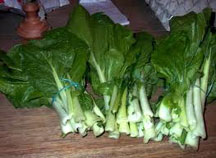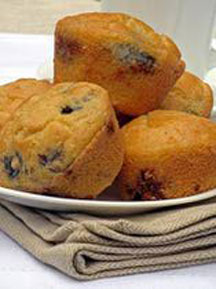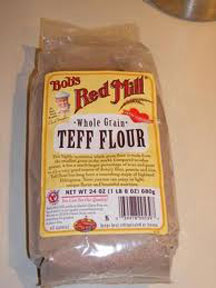Want Fewer Wrinkles? Slow Down Glycation!
By Alice Osborne
I am constantly amazed at the connection between how we feel and how we look, to what we eat. Take wrinkles for instance. Science calls the wrinkle-making process "glycation." I won't bore you with all the nitty gritty details as to how wrinkles happen, but let's do talk about what we can do to have fewer wrinkles - it's within our control.
Scientists say the best way to deal with glycation (you can't totally stop it, as it's part of the aging process) is to minimize it and slow it down by eating less sugars and carbohydrates, especially fructose, which is the most glycating of sugars because of the way the liver processes it.
 OK, we can figure out the sugar thing, but how about carbohydrates? Which foods, exactly, are high in carbohydrates? I went to about.com for the answer: Low-carb expert, Laura Dolson, tells us that foods highest in carbs are also high in sugar and/or starch - anything made with flour or sugar, grains, foods with added sugar, and starchy vegetables such as potatoes and corn. Most processed foods are high-carb. Examples of low-carb foods are proteins (meat, nuts, and egg), most vegetables, low sugar fruits (lemons, limes, and strawberries, etc.), and some dairy products.
OK, we can figure out the sugar thing, but how about carbohydrates? Which foods, exactly, are high in carbohydrates? I went to about.com for the answer: Low-carb expert, Laura Dolson, tells us that foods highest in carbs are also high in sugar and/or starch - anything made with flour or sugar, grains, foods with added sugar, and starchy vegetables such as potatoes and corn. Most processed foods are high-carb. Examples of low-carb foods are proteins (meat, nuts, and egg), most vegetables, low sugar fruits (lemons, limes, and strawberries, etc.), and some dairy products.
Now here are 7 specific things Laura says we can do to minimize and slow down glycation:
 1. Stop Drinking Sugary Beverages. Most sugary drinks have very little nutritional value, and don't do a good job of filling you up. For example, 100 calories from apple juice would leave you hungrier than if you ate 100 calories worth of an actual apple. Therefore, "drinking your fruit" means consuming more "empty calories."
1. Stop Drinking Sugary Beverages. Most sugary drinks have very little nutritional value, and don't do a good job of filling you up. For example, 100 calories from apple juice would leave you hungrier than if you ate 100 calories worth of an actual apple. Therefore, "drinking your fruit" means consuming more "empty calories."
 2. Start Eating More Vegetables. Which vegetables? Not the starchy ones, such as corn and potatoes, but the non-starchy veggies, such as greens, cauliflower, avocado, mushrooms, etc. Here's a list, roughly arranged from lowest to highest carbohydrate counts, but all are non-starchy and generally low in carbohydrates. (Remember, exact carb count depends on serving size and when counting veggie carbs, fiber is not counted, and can be subtracted from the total.)
2. Start Eating More Vegetables. Which vegetables? Not the starchy ones, such as corn and potatoes, but the non-starchy veggies, such as greens, cauliflower, avocado, mushrooms, etc. Here's a list, roughly arranged from lowest to highest carbohydrate counts, but all are non-starchy and generally low in carbohydrates. (Remember, exact carb count depends on serving size and when counting veggie carbs, fiber is not counted, and can be subtracted from the total.)
• Sprouts, alfalfa and other small seeds (sprouted legumes have more carbs)
• Greens - lettuce, spinach, chard, etc. (radicchio and endive count as greens)
• Hearty Greens - collards, mustard greens, kale, etc.
• Herbs - parsley, cilantro, basil, rosemary, thyme, etc.
• Bok Choy
• Bamboo Shoots
• Celery
• Radishes
• Sea Vegetables (Nori, etc)
• Mushrooms
• Cabbage (or sauerkraut)
• Jicama
• Avocado
• Asparagus
• Okra
• Cucumbers (or pickles without added sugars)
• Green Beans and Wax Beans
• Fennel
• Cauliflower
• Broccoli
• Peppers (the green and red bell peppers, jalapeno peppers)
There are some easy ways to remember which veggies are lowest in carbohydrates:
Leaves have the least amount of carbohydrate, and what little there is, is wrapped in so much fiber that there is little, if any, impact on blood sugar. They all contain enormous amounts of vitamin K, and are also rich in phyto-nutrients, vitamins and minerals.
Stems and flowers are next, including asparagus, cauliflower, broccoli, and mushrooms.
Fruits, or the part of the plant that contains seeds. This is botanically the fruit of the plant, although we tend to call it "fruit" only if it's sweet. This includes peppers, squashes of all types, green beans, tomatoes, okra, and eggplant. Avocado is also a fruit, though lower in carbs than the others.
Roots and Seeds, such as jicama, radishes, celery root (celeriac) and carrots.
 3. Eat More Fat. Believe it - the right fats are a good thing. Fats fill us up, and make it less likely that we will overeat, especially in conjunction with consuming less carbs. The body needs fat to run smoothly. And there is absolutely no reason to think that adding fats to our diet is a bad thing. Add fats from such sources as olive oil, nuts, avocado, fatty fish, and flax seeds.
3. Eat More Fat. Believe it - the right fats are a good thing. Fats fill us up, and make it less likely that we will overeat, especially in conjunction with consuming less carbs. The body needs fat to run smoothly. And there is absolutely no reason to think that adding fats to our diet is a bad thing. Add fats from such sources as olive oil, nuts, avocado, fatty fish, and flax seeds.
Are some fats bad? Yes; researchers say we shouldn't eat soy and seed oil (e.g. corn and safflower), which are high in omega-6 fats and contribute to chronic inflammation. Artificial trans-fats (partially hydrogenated fats) are also bad news. By and large, sticking to natural fats in whole foods is the way to go.
 4. Make Sure You Are Getting Enough Protein. The National Academy of Science says we can safely eat up to 35% of our diet as protein.
4. Make Sure You Are Getting Enough Protein. The National Academy of Science says we can safely eat up to 35% of our diet as protein.
 5. Go for Quality Over Quantity. As you are increasing your vegetables, protein, and healthy fats, cut down on the portion sizes of any high carb foods you are still eating. For instance, in Italy people eat only about a cup of al dente (slightly firm) pasta in a meal. Just because the restaurant down the street brings you a giant plate of pasta doesn't mean that's a good portion size. Half a cup of potatoes or rice is a standard serving size. Use measuring cups and become acquainted with how much a true portion is. Also, At the same time, don't waste the carbs on boring or less-than-delicious food. Have a 2 x 2-inch piece of a really great cake, or a small scoop of premium ice cream. One square of really good chocolate can satisfy better than a big low-grade chocolate bar.
5. Go for Quality Over Quantity. As you are increasing your vegetables, protein, and healthy fats, cut down on the portion sizes of any high carb foods you are still eating. For instance, in Italy people eat only about a cup of al dente (slightly firm) pasta in a meal. Just because the restaurant down the street brings you a giant plate of pasta doesn't mean that's a good portion size. Half a cup of potatoes or rice is a standard serving size. Use measuring cups and become acquainted with how much a true portion is. Also, At the same time, don't waste the carbs on boring or less-than-delicious food. Have a 2 x 2-inch piece of a really great cake, or a small scoop of premium ice cream. One square of really good chocolate can satisfy better than a big low-grade chocolate bar.
 6. Choose Brown Over White. Use brown rice instead of white. Also, when possible, eat your grains whole instead of ground up into flour. Some people find a "no white diet" to be an easy way to cut back on carbs -- no potatoes, white rice, white sugar, or white flour.
6. Choose Brown Over White. Use brown rice instead of white. Also, when possible, eat your grains whole instead of ground up into flour. Some people find a "no white diet" to be an easy way to cut back on carbs -- no potatoes, white rice, white sugar, or white flour.
 7. Pull a Switcheroo. Start substituting lower-carb foods for high carb counterparts. Try a high-fiber low-carb cereal. Cook spaghetti squash instead of pasta. Have a package of nuts at the movies instead of popcorn. Collect and use low-carb recipes in place of high carb favorites.
7. Pull a Switcheroo. Start substituting lower-carb foods for high carb counterparts. Try a high-fiber low-carb cereal. Cook spaghetti squash instead of pasta. Have a package of nuts at the movies instead of popcorn. Collect and use low-carb recipes in place of high carb favorites.
Some good low-carb substitutes for high-carb favorites? Start with bread:
• Low-carb tortillas
• High-fiber "crisp breads" such as GG Bran Crispbread
• Flax meal bread (very "hearty" bread)
Laura Dolson, low-carb expert and an about.com guide, calls her bread recipe "focaccia" because it is baked in that style -- flat on a sheet pan, and then cut up into whatever sized pieces you want. It works for toast, sandwiches, and other bready uses. It is "rough" in texture like heavy whole grain breads. Since it isn't made with wheat, it doesn't have the same kind of texture as wheat breads, but the carb in flax is almost all fiber. Flax is very useful on a low carb diet, as well as being amazingly good for you.
Focaccia-Style Flax Bread

Ingredients:
2 cups flaxseed meal
1 tablespoon baking powder
1 teaspoon salt
1 - 2 tablespoon xylitol or stevia powder
5 beaten eggs
1/2 cup water
1/3 cup olive oil or almond, sesame, or avocado
Directions:
Bake for about 20 minutes, until it springs back when you touch the top and/or is visibly browning even more than flax already is. Cool and cut.
Recipe formatted with the Cook'n Recipe Software from DVO Enterprises.
Low-carb muffins. Laura also perfected a low-carb muffin. She only uses a tiny bit of sweetener. This way they can be split and toasted, or used for sandwiches.
Low-Carb Muffins

Tasty and filling, these muffins are real crowd-pleasers.
Ingredients:2 cups almond flour or almond meal
2 teaspoons baking powder
1/4 teaspoon salt
1/2 cup butter melted
4 eggs
1/3 cup water
Directions:
Preheat oven to 350°F. Butter a muffin tin. You can really do it with any size, but I'm basing the recipe on a 12-muffin tin. Mix dry ingredients together well. Add wet ingredients and mix thoroughly (You don't want strings of egg white in there and you don't have to worry about "tunnels" when you are using almond meal). Put in muffin tins (about 1/2 to 2/3 full) and bake for about 15 minutes.
Variations: Add 1 cup fresh or frozen blueberries for blueberry muffins. For apricot muffins, take a teaspoon of sugar-free apricot jam on each muffin and push it in slightly (it will sink more during baking).
Recipe formatted with the Cook'n Recipe Software from DVO Enterprises.
• Ezekiel® and other similar breads (found in freezer case at whole foods markets). Watch out: Whole wheat breads made from finely ground flour raise blood sugar just as much as white bread.
There are also good substitutes for potatoes:
• Steamed and mashed cauliflower is the most popular
• Celeriac (celery root) is also good
Recipe: Cauliflower "Potato" Salad
Cauliflower "Potato" Salad

Unless you tell 'em, no one will know there are NO potatoes in this dish!
Ingredients:1 medium head cauliflower (about 4 cups-1 quart florets)
6 hard-boiled eggs
1 medium stalk celery including leaves
1/2 cup chopped green pepper
4 green onions chopped (green and white parts)
3 tablespoons Carb Counters Instant Mashers optional
3/4 cup mayonnaise
1 tablespoon prepared mustard (yellow or brown)
1 teaspoon lemon juice
1/4 teaspoon garlic powder
1/4 teaspoon onion powder
2 tablespoons sugar-free pickle relish (dill)
salt to taste
pepper to taste
fresh herbs to taste and for garnish (optional)
Directions:
Drain and put into a medium bowl. Chop the egg and add. Toss with salt and pepper; it does seem to take a surprising amount of salt, but this would be to taste.
Mix the ingredients for the dressing (mayo, lemon juice, spices, etc.), to taste. Mix chopped vegetables and dressing into the cauliflower and egg mixture. Add chopped fresh herbs if you wish - chives, dill, or parsley work well, but I've even used mint for something different. Garnish with the herb, or sprinkle with paprika. Chill.
Recipe formatted with the Cook'n Recipe Software from DVO Enterprises.
Then there are substitutions for crackers that your whole foods store carries, but the best substitution are homemade crackers from flax or teff flour. Here is low-carb expert, Laura Dolson's recipe for a great high fiber, crunchy, nutritious, and tasty homemade cracker that's good with dips, spreads, or just plain:
Garlic Parmesan Flaxseed Crackers

This flavorful cracker makes a great snack or accompaniment to a good hearty soup.
Ingredients:1 cup flaxseed meal
1/3 cup grated Parmesan cheese
1 1/2 teaspoons garlic powder
1/2 teaspoon salt
1/2 cup water
Directions:
Bake until the center is no longer soft, about 15-18 minutes. If it starts to get more than a little brown around the edges, remove from oven. Let cool completely - it will continue to crisp up. Break baked cracker sheet into pieces.
Recipe formatted with the Cook'n Recipe Software from DVO Enterprises.
 Finally, there are wonderful substitutes for typical grain flours: Nuts and seeds can be ground into meal/flour, or purchased that way. They require different recipes, but can be used for cakes, muffins, quick breads, and other recipes. Almond flour, flax seed meal, teff flour, and coconut flour are just a few of the choices we have today.
Finally, there are wonderful substitutes for typical grain flours: Nuts and seeds can be ground into meal/flour, or purchased that way. They require different recipes, but can be used for cakes, muffins, quick breads, and other recipes. Almond flour, flax seed meal, teff flour, and coconut flour are just a few of the choices we have today.
This is a lot of information, but tackle the idea a little at a time: Be conscious of the high carb foods you are eating and cut back, make a few substitutions here and there, then cut out the sugary foods as much as possible. Give this eating lifestyle enough time and watch how the pounds will drop, your energy will increase, and the wrinkles will be much slower to show up!
Sources:
www.businessinsider.com
www.hotelminishop.com
www.customjuju.com
www.sunwarrior.com
www.bodyconfidential.co.uk
www.kraftcanada.com
www.docsfitnesstips.blogspot.com
www.mwbeercollective.wordpress.com
www.linneyskitchen.blogspot.com
www.naturenourishes.blogspot.com

Contribute to the Cook'n Club!
DVO would love to publish your article, prose, photography and art as well as your cooking, kitchen and nutrition tips, tricks and secrets. Visit the Newsletter Submission / Win Win for All section in our Forum for more information and details.

